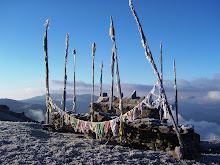Malkki, Liisa, 1997 National Geographic: The Rooting of Peoples and the Territorialization of National Identity among Scholars and Refuges. In Akhil Gupta and James Ferguson, eds. Culture, Power, Place: Explorations in Critical Anthropology. Durham: Duke University Press (pp. 52-74).
The deconstruction of a certain form of seeing and thinking in relation to entities such as nations and national borders, which implies ”sedenterian metaphysics”, these tensions between sedentarism and displacement, “rooted” and “uprooted” identities, “national” and “supranational” is what is at stake in Malkki’s article. She understands identity as “always mobile and processual, partly self-construction, partly categorization by others, partly condition, a status, a label, a weapon, a shield, a fund of memories, and so on” (71). There is a need to consider in new ways ideas of territory, belonging, roots, culture, diaspora, displacement and identity. But are these new questions? Like Malkki I also agree that people have always moved because of desire or violence. The first question I need to pose following Malkki’s believe in particular theoretical shifts that “give these phenomena greater analytical visibility” (53) in social sciences is why now (late 1990s) are these phenomena more visible? Because of the allegedly lack of grand narrative (Nation, Class, Rationality, Truth, etc.) that supposedly legitimate the order of things in the world? If people were constantly moving and societies were extending their influences beyond and beneath the national borders why the rooting/uprooting of people and the de/re-territorialization of (trans)national identities were not at stake before? It is true that identity has been intensely territorialized not only for the ones shown by Malkki, the displaced and the “refugees”, but also by people living the “homeland” too. Identities formations in the late capitalism have been centered in a dis-continuum that goes from the “rooted” “homeland” to the displaced/”uprooted” “refugees” in the “exile”. And these images are based in certain tropos taken by the botanical arsenal of images such as (national) “soil”, (home) “land”, “roots”, “trees”, “seeds”, and “origins.” And like real trees, roots have to be enrooted in one specific place/space/soil; they cannot be in different and discontinuous places at the same time (unless we re-consider what we mean by identity and belonging in different ways). This idea of “national geographic maps” is precisely what Gupta and Ferguson are criticizing in the other article we saw this week: the supposition that 1 place = 1 space = 1 culture as a monolithic entity with no ambiguities or incoherence. This is what Malkki, following Deleuze and Guattari, called a “sedentarist metaphysics” that produce a moral order that fixed and incarcerated “native” people in the “rooted” lands or pathologyzed “uprooted” “expatriates” in their “exile”.
¡Y tú me lo preguntas! Poesía eres tú
Hace 1 día.


No hay comentarios.:
Publicar un comentario